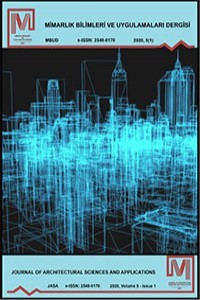
Mimarlık Bilimleri ve Uygulamaları Dergisi (MBUD)
Yazarlar: Pınar ÖKTEM ERKARTAL
Konular:Mimarlık
DOI:10.30785/mbud.801122
Anahtar Kelimeler:Turkish House,Yalvaç Tıraşzade Mansion,Turkish culture,Vernacular housing,Space organization
Özet: Architecture and culture constantly interact with each other. Since the vernacular housing is built based on experience within the framework of the user's wishes and needs; it reflects both individual and social life strongly. Thanks to its unique spatial, structural and aesthetic features, “Turkish House” is a very important cultural heritage. In accordance with the lifestyle of the Turks, it has been shaped within the framework of principles such as adaptation to nature and the built environment, rationality, functionality, internal-external harmony (legibility), frugality, humanistic measures, regionalism, and flexibility. In this direction, the study aims to reveal the spatial organization of Yalvaç Tıraşzade Mansion within the framework of the "Turkish House". Turkish family life, social organization, climate characteristics of Central Anatolia, local riches, local acceptances are reflected in the spatial setup, facade, and details of Yalvaç Tıraşzade Mansion. In order to show this reflection, the building has been analysed over the cultural facts. In the study, where literature review and on-site observation were applied together as a method, a fiction flowing from the general view to the detailed examination of the case was chosen.